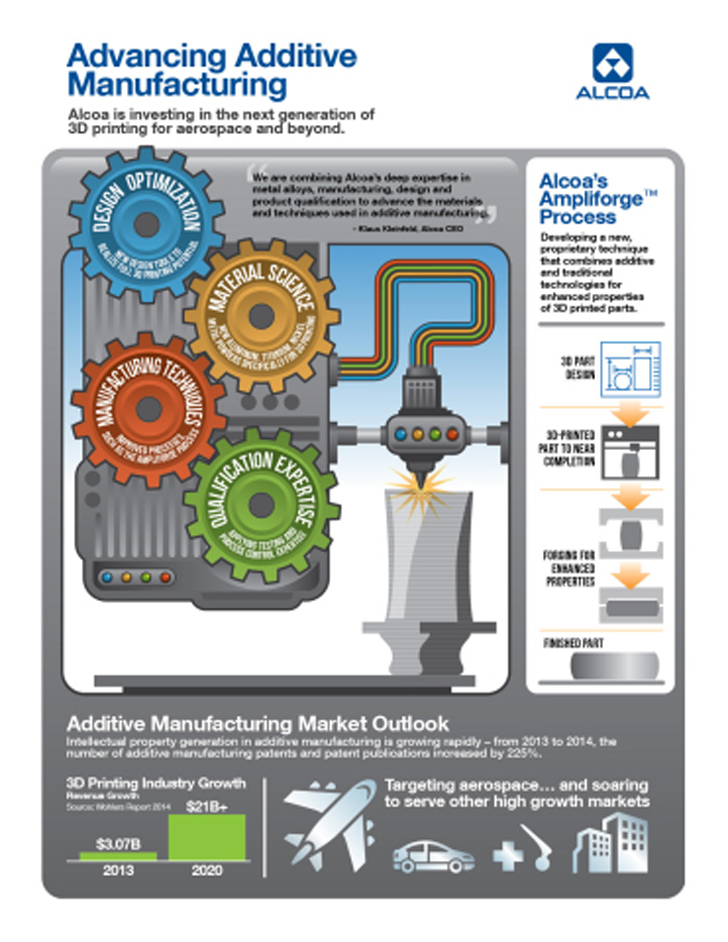Ranging back all the way to 1888, Alcoa has been on the forefront of engineering and manufacturing various metals for over 125 years. Starting with the development of the first aluminum tea kettle in 1889, just a year after they were founded, Alcoa has consistently come up with breakthrough technologies for manufacturing with lightweight and reliable metals. They’re certainly not stuck celebrating their glorious innovations of the past either, Alcoa has just as readily adapted 3D printing into their business model as the additive manufacturing industry has exploded over the past few years. This is evident by the recent $60 million investment that Alcoa just put towards expanding the 3D printing set-up within their Pennsylvania-based Alcoa Technical Center, which already happens to be the world’s largest light metal research center. The investment is geared toward improving their additive manufacturing capabilities to produce quality 3D printed metals for the next generation of aerospace technologies; take a look at the vast improvements they’ve made at their research center.
The expansion is lead by Aloca’s strategic Ampliforge process, which is a technique featuring advanced metal-based materials, designs, and an intricate manufacturing process. The way Ampliforge operates is as follows: first, an object is designed and nearly 3D printed to completion, but the operation is stopped before the object is finished, where it is then treated in a more traditional metal manufacturing process, such as forging. The process has been proven to strengthen and enhance the characteristics of the 3D printed parts, and also helps cut down on used materials and keeps this multi-faceted manufacturing process relatively simple.

Having produced 3D printed tools and prototypes for over 20 years now, Alcoa is able to recognize the need to expand their already prominent additive manufacturing facility. They now have the world’s largest Hot Isostatic Pressing (HIP), a manufacturing process used to reduce porosity in their metals, while simultaneously increasing density, effectively increasing the mechanical properties and functionality of their aerospace products. The expansion to their center will be completed sometime at the start of 2016, and will lead to the employment of over 100 full-time positions, including material, design, and technology experts by the year 2017. By keeping up with the times and staying one step ahead of the competition, Alcoa has been able to remain a leader for metal manufacturing for an unprecedented amount of time. With this announcement of the massive $60 million investment in expanding their 3D printing technologies, it seems like they won’t be losing that top spot any time soon.



